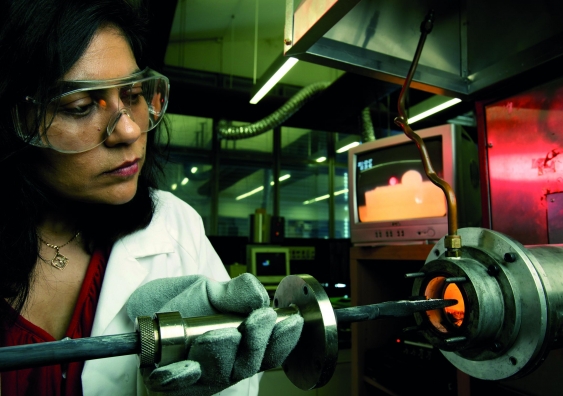Currently, this is virtually impossible. Unlike the fuel efficiency stickers prominently displayed on windscreens in car showrooms or the multitude of technical specifications in the manufacturers handbooks, there's no easy way for consumers to weigh up the green (or otherwise) credentials of the materials used to make a vehicle. Likewise for the materials used to make most of the products we purchase or use in our daily life.
As a materials scientist I know there is no technical reason why we can't offer consumers this kind of information.
Over the past decade or so we've made huge strides in promoting sensible, efficient consumption and in supporting other environmental initiatives from buying local to buying carbon offsets. We have star systems for whitegoods and utilities bills with graphics analysing energy usage and environmental impact.
I can differentiate between the impact of eating a bowl of "no added sugar" cereal -- coming in at 6 per cent of my recommended daily intake of kilojoules -- and a couple of squares of chocolate, which will deliver 7 per cent in a single bite. I'd like to be able to similarly differentiate when I am purchasing complex products, which cannot be simply converted back into the same products again.
Cars, for example, contain many different materials such as metal, glass and varying types of plastics. It would be great if they came with recycling status labels in the form of an index that describes how recyclable their components are, and whether the product contains recycled materials.
On the face of it, recycling in Australia is booming. Between 2000 and 2009, recycling rates increased by 77 per cent. Add to this the value of materials derived from waste and redirected back into production -- about $4.582 billion a year, according to the latest figures published by the Australian Bureau of Statistics. Globally, growth is on a similarly sharp upward curve. The annual global market in resources sourced from waste streams is worth about $410bn.
However, the growth in the sheer volume of waste we are producing is even greater, far outstripping recycling gains. At the same time, new technical barriers to recycling are emerging. More and more of what we throw away is made up of complex or hazardous materials that cannot be readily recycled using traditional, single material methods.
That means without considerable innovation our landfill sites will become increasingly clogged, squandering many potentially valuable resources.
As far as cars go, the good news is that they are both currently partly recycled and largely recyclable. Scrap dealers have long stripped end-of-life vehicles for steel and, more recently, aluminium -- materials that can be used again and again without loss of quality and performance.
By using scrap iron and steel instead of virgin ore, steel producers reduce air and water pollution by more than half during the manufacturing process.
According to the US Environmental Protection Agency, about 80 per cent of a waste vehicle by weight can currently be recycled. The EU and China have policies targeting recycling rates of 85-95 per cent. But, there's much more to be done.
Last year, of the more than 85 million new cars and light commercial vehicles that came on to the world's roads, the single largest number, almost 20 million, were purchased in China. That's 27 million more vehicles a year worldwide than a decade ago. And, everywhere we are replacing our vehicles in ever shorter cycles.
What's most problematic is the non-metal components of vehicles that can't be easily recycled, such as plastics, windscreens and other glass.
This is part of the burgeoning and problematic complex wastes emerging all over the world. For vehicles, these complex materials currently end up as "automotive shredder residue" (ASR), a mixture of ground plastics, rubber, textiles, fibrous materials and wood, contaminated with metal slivers and oil. For every vehicle some 120kg of it ends up in landfill.
At UNSW, we are working on a solution for ASR that could lead to 100 per cent recyclable vehicles. The research builds on our success in using high temperature reactions to convert waste tyres and plastic into valuable materials for steel production. In the case of ASR, we are achieving promising results using it in the production of metal alloys.
From a scientific and technical point of view I am optimistic. One of our goals at UNSW is to develop science and technology that can be readily applied to meet the demands faced by industry and we have an established track record of delivering research and technology suitable for implementation by industry.
We have little choice but to move in this direction. Over the past 50 years, humans have consumed more resources than in all previous history. The US EPA reported in 2009 that while the world's population is projected to grow by 50 per cent between 2000 and 2050, global energy and material use will probably grow by 300 per cent.
The solutions are out there, but they rely on energy and investment. I'd like to buy high-quality, high-performance goods that are better for the environment. That should be a combination the market can profitably embrace.
Professor Veena Sahajwalla is director of the UNSW Centre for Sustainable Materials Research and Technology and was national winner of The Australian Innovation Challenge 2012.SMART@UNSW is hosting the 2013 International Sustainability Symposium on 3-4 October, to be opened by UNSW Vice Chancellor Professor Fred Hilmer.
This opinion piece was first published in The Australian.



